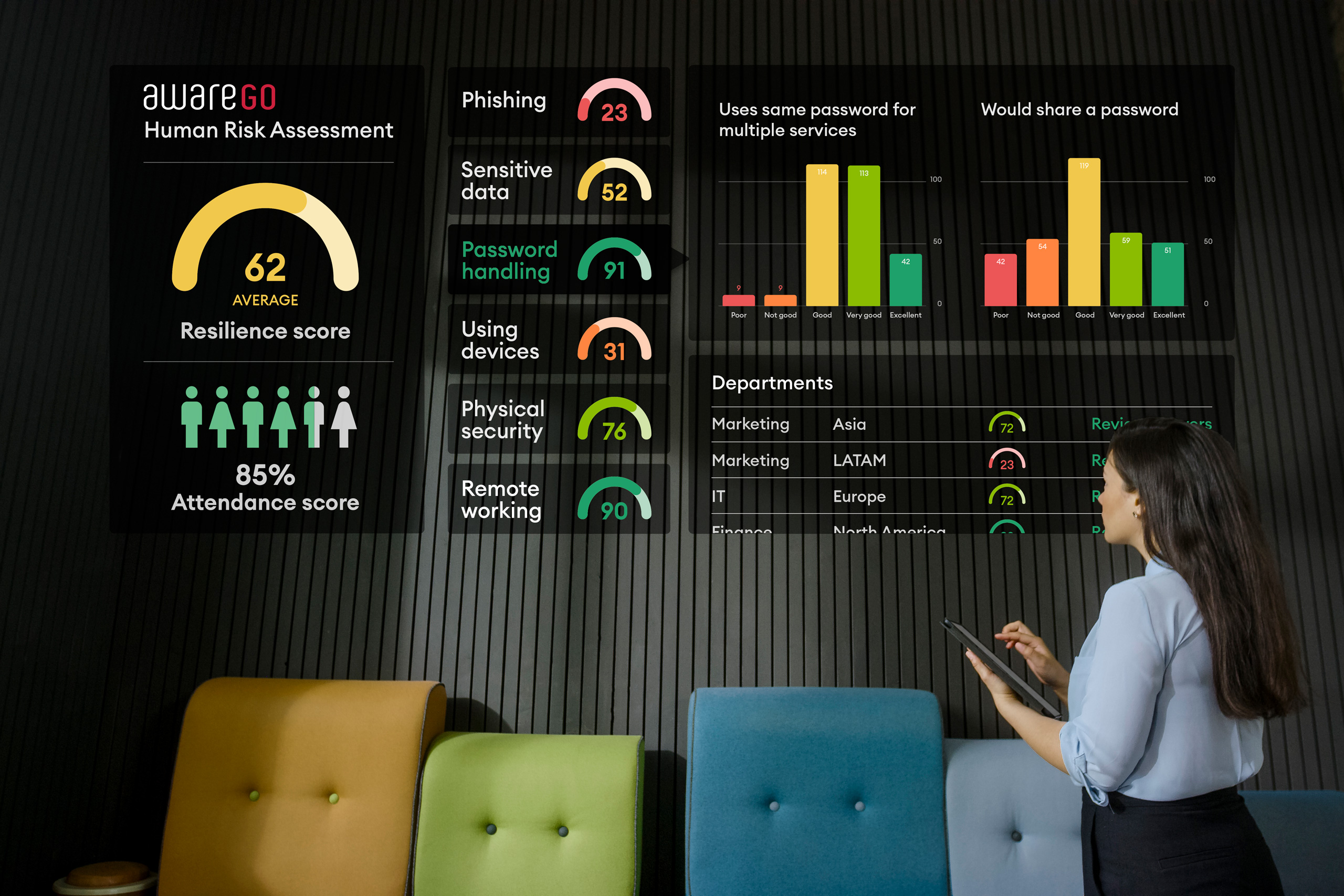Cloud computing has revolutionized the way businesses operate, offering them cost efficiency, scalability, and unprecedented flexibility. Yet, despite its growing adoption, misconceptions about cloud security continue to persist. These misconceptions can deter organizations from leveraging the full benefits of the cloud or, conversely, lead to complacency about real risks. Here are 6 common myths surrounding cloud security, and what you need to know instead.

Myth 1: The Cloud is Less Secure than On-Premises Solutions
Fact: While security concerns are valid for any technology, it’s incorrect to assume that cloud solutions are inherently less secure than on-premises systems. Cloud providers invest significantly in security measures, and they often employ dedicated security experts to monitor threats and update defenses. It’s also worth noting that many data breaches are the result of human error, which can occur whether data is stored on-premises or in the cloud.
AwareGO provides a Human Risk Assessment that can measure human risk and find gaps in cybersecurity practices that need to be addressed among employees. You can even tailor training content to specific company departments based on known threat areas from their evaluation.
Myth 2: Data Stored in the Cloud is Automatically Secure
Fact: Cloud providers indeed invest heavily in security, but it’s important to remember that cloud security is a shared responsibility. While your provider secures the infrastructure, you are responsible for securing the data you store. This includes implementing strong access controls, encryption, regular data backups, and other protective measures.
Myth 3: All Cloud Providers Offer the Same Level of Security
Fact: Not all cloud providers are created equal when it comes to security. Each provider offers different security features and controls. Therefore, it’s crucial to conduct due diligence when selecting a cloud provider. Check their security certifications, compliance attestations, and the specific security measures they provide.
Myth 4: Cloud Security is Only the Provider’s Responsibility
Fact: As we’ve mentioned, cloud security is a shared responsibility. Businesses must take proactive steps to secure their data, like managing user access, ensuring data encryption, and complying with relevant regulations.
Myth 5: Cloud Migration Automatically Leads to Data Loss
Fact: Data loss is not an inevitable part of cloud migration. With a proper migration strategy and the right tools, you can move data to the cloud safely. Regular backups and data redundancy strategies can further mitigate data loss risks.
Myth 6: Once in the Cloud, Data is Impossible to Retrieve After a Breach
Fact: This myth is far from the truth. Most cloud providers offer robust data recovery and backup solutions. If you regularly backup your data and have an incident response plan in place, you should be able to recover your data after a breach.
Dispelling these myths is vital to understanding the real risks and benefits associated with cloud computing and forming an effective cloud security strategy. While cloud security does require attention and resources, the benefits of cloud adoption — such as scalability, cost efficiency, and accessibility — make it an essential tool for modern businesses. Remember, an informed approach is the best way to navigate the complexities of cloud security. Here are 7 best practices to enhance your cloud security:
1. Implement Strong Access Management
Proper access management is crucial in cloud security. Implement a robust system for managing user access to ensure only authorized personnel can access sensitive data. Incorporate techniques such as multi-factor authentication (MFA), strong password policies, and least privilege access to add extra layers of protection.
2. Encrypt Your Data
Whether it’s at rest or in transit, your data should be encrypted. Encryption converts data into a code that can only be read by those who have the corresponding decryption key. This makes it significantly harder for cybercriminals to access and misuse your data, even if they manage to get their hands on it.
3. Regularly Backup Your Data
Regular data backups can be a lifesaver in the event of a cyber attack or data loss. Keep a regular schedule for backups and verify the integrity of the backups to ensure you can retrieve your data when needed.
4. Choose a Reputable Cloud Service Provider
The cloud service provider you choose plays a significant role in your cloud security. Look for a provider with a strong track record in security and compliance. Check for certifications like ISO 27001 or SOC 2 to ensure they meet international security standards.
5. Understand and Comply with Relevant Regulations
Depending on your industry, there may be specific regulations you need to adhere to for data storage and protection. For instance, healthcare organizations must comply with HIPAA, while businesses handling payment card information need to adhere to PCI DSS. Understand these regulations and ensure your cloud security measures are compliant.
6. Regularly Monitor and Audit Your Cloud Environment
Continual monitoring of your cloud environment can help you spot and address potential threats or vulnerabilities quickly. Use tools and services that provide real-time alerts and conduct regular audits to assess your cloud security posture.
7. Train Your Staff
Your staff play a vital role in maintaining cloud security. Regular training can help them understand the importance of security measures and equip them to recognize and avoid potential threats like phishing attacks or malware. AwareGO offers an in-depth cybersecurity awareness training program that engages employees through digestible video content and interactive scenarios.
Protecting your data in the cloud can seem daunting, but by following these best practices, you can create a robust and effective cloud security strategy. Remember, cloud security isn’t a one-and-done task, but a continuous process that evolves with your business and the ever-changing cybersecurity landscape. Follow the AwareGO Blog to keep yourself informed about the latest trends and threats in cybersecurity to stay one step ahead of cybercriminals.
AwareGO’s full solution includes human risk management and training to tackle the entire employee cybersecurity lifecycle – assess, train, nudge, test – where cybersecurity and behavioral science work together to change behavior and create a sustainable cybersecurity culture.
We help our clients go beyond compliance by transforming human cyber risk data into insights – and insights into informed action – automatically.
We offer a free trial of our holistic human risk management platform (no credit card or commitment needed) where you can take a look at all our videos, assessments and ready-made programs , with free videos and interactive scenarios, to find out if our security awareness training and risk assessment fit your needs.






